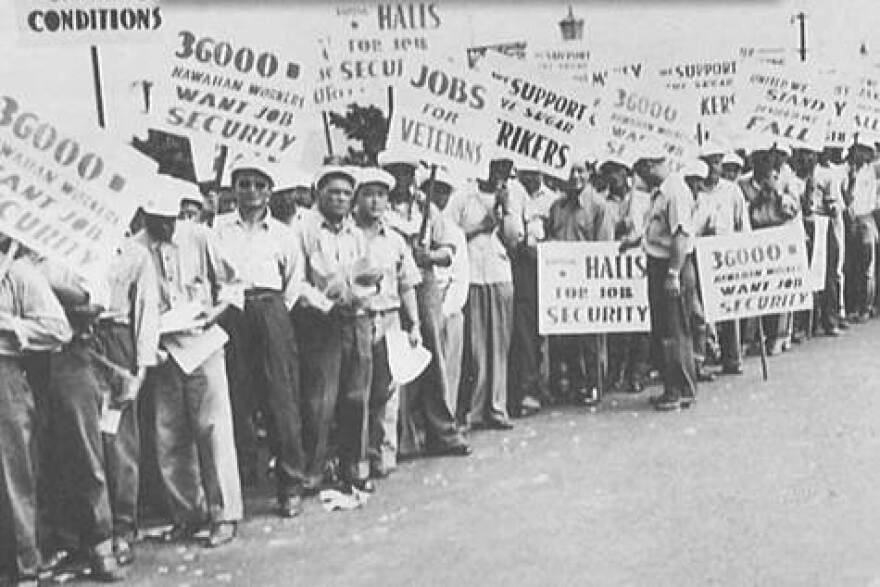It’s Labor Day. For some, this means a long three-day weekend. But across the United States, it’s a celebration of worker rights and the labor movement.
The Sugar Strike of 1946 began on Labor Day. It was the first strike to ever shut down Hawai’i’s powerful sugar industry, a pivotal moment in Hawai’i’s labor history.
More than 26,000 plantation workers and their families went on strike for nearly three months, closing all but one of 34 plantations across the island chain.

“In Hawaiʻi, these plantations exercised what has really been described to a lot of people as 'feudalistic' control over workers,” says William Puette, Director of the Center for Labor Education and Research at the University of Hawaiʻi – West Oʻahu, “And there were lots of strike that were attempted and failed for a variety of reasons. And this was really considered to be the first successful strike that was very well organized.”

Sugar plantations began operating in the early 1800s. Because it was labor intensive, plantation owners began importing overseas labor. First with the Chinese, then the Japanese, Korean, and later Filipino.
“It was advantageous to have on your plantation groups from different ethnicities so that if one of them got it in their mind to strike that you would still be able to get things done by the other groups,” says Puette, “That obviously, they didn’t admit to this but it laid the groundwork for them to be able to have one group pitted against the other by making sure that they didn’t play well together.”

By the 1940s, Japanese and Filipino sugar laborers dominated the plantation workforce. So when the International Longshore and Warehouse Union (ILWU) began organizing the 1946 sugar strike, they made inclusiveness part of their campaign.
“Understanding that every strike committee had to have Filipino and Japanese leadership and that all the meetings had to be conducted in English, Japanese, and Ilocano at the bare minimum, and sometimes also Visayan,” says Puette, “It’s amazing how they were able to do things. They were able to show the way for organizing and not by racial or ethnic groups, which was a pretty common thing to do in Hawai’i before then and had never really been successful.”

The strike succeeded in changing the balance of power between workers and the plantation. In collective bargaining, the ILWU secured benefits such as housing, medical, pensions, and wages, as inherent rights for workers instead of privileges granted as favors by plantation owners.
“The politics of Hawaiʻi would never be the same after that. And certainly labor relations would not be the same after that,” says Puette, “Leadership in all the different areas would not be the same because you started to see the rise of people from the different ethnic groups, not just Japanese, but Filipinos, and everybody else which you wouldn’t have seen without that landmark strike of 1946.”
Today, nearly 20 percent of Hawaiʻi’s workforce is represented by a union, giving the state the second-highest union density in the nation behind New York.




